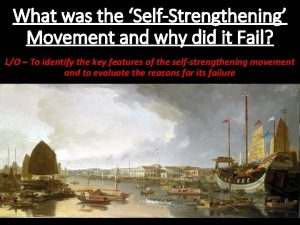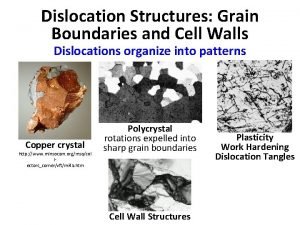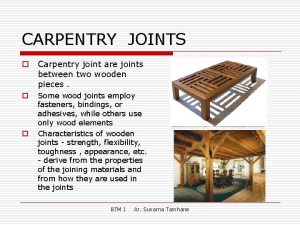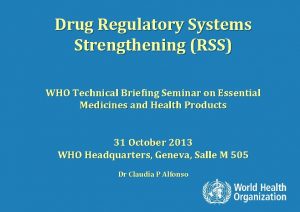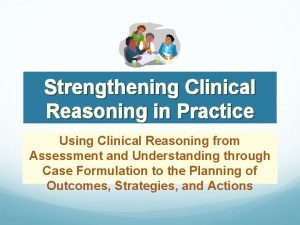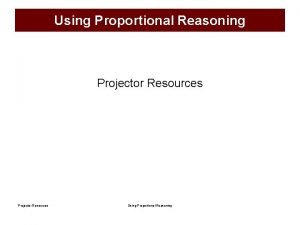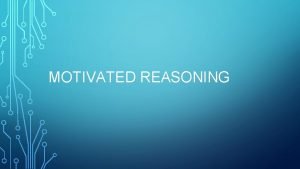Strengthening Clinical Reasoning in Practice Using Clinical Reasoning








- Slides: 8

Strengthening Clinical Reasoning in Practice Using Clinical Reasoning from Assessment and Understanding through Case Formulation to the Planning of Outcomes, Strategies, and Actions

Module 2 Clinical Reasoning and Case Formulation Clinical Reasoning & Case Formulation Modules • By Ray Foster & Kate Gibbons for New Mexico BHSD, 2017

Module 2: Session 1 Building Strong Reasoning and Formulation Habits Clinical Reasoning & Case Formulation Modules • By Ray Foster & Kate Gibbons for New Mexico BHSD, 2017

Moving from Thought to Action What Do We Know Now? What Does It All Mean? [Situational Awareness] [Clinical Grasp] Progressive Discovery Understanding & Formulation What Do We Do Next? [Clinical Forethought] Outcomes & Strategies

Clinical Reasoning PRACTICE combines clinical reasoning and practical problem solving to help people in need improve their lives. Diagnosis and Clinical Case Formulation are different processes: CLINICAL DIAGNOSIS - Defines a pattern of symptoms for DSM-5 classification, eligibility determination, and authorization of services and funding. CLINICAL CASE FORMULATION - Synthesizes a big picture understanding of factors that explain the person’s situation and conceptualizes how to intervene effectively. Clinical Reasoning is used to develop a Clinical Case Formulation that bridges assessment, setting of outcomes, and planning of intervention pathways with strategies to bring about changes.

DSM-5: Clinical Case Formulation A Clinical Case Formulation includes a clinical history and concise summary of the bio-psycho-social factors contributing to present mental disorders. It is not simply a check-off of symptoms used to make a diagnosis. Focuses on clinically significant distress and impairment in functioning. Applies clinical judgment when making a reliable and useful assessment of factors related to a person’s disruptions in daily functioning. Considers the combination of predisposing, precipitating, perpetuating, and protective factors that result in the conditions of concern. Clinical Reasoning & Case Formulation Modules • By Ray Foster & Kate Gibbons for New Mexico BHSD, 2017 Provides essential understandings that guide development of a

Clinical Reasoning Steps Consider the person’s Plan interventions and Collect and assemble Take actions to implement present life situation, social context, and culture (Situational Awareness) historic and diagnostic information Study the information to recognize patterns and build a bio-psycho-social “clinical case formulation” (Clinical Grasp) Identify matters that support resiliency/recovery that are used to select and guide interventions and supports, preferred strategies, and necessary action for life change interventions and supports Evaluate efforts and results Reflect on the strategies and supports used, results produced, and what has been learned in order to find what is working now and to plan next steps Apply insights to next steps

Clinical Reasoning Identifies and describes the factors that explain the person’s life situation, strengths and needs, trauma history, underlying issues, motivation for change, and prospects for change (tells the person’s story) Surfaces and defines any compelling urgencies and immediate needs (often related to the reasons for services) Reveals what things could go wrong based on history, tendencies, risk patterns and present threats of harm Defines life change outcomes (e. g. , personal recovery goals) Explains strategies that have worked and not worked when used
 Conferência de berlim self-strengthening movement
Conferência de berlim self-strengthening movement Fcat writing
Fcat writing Dislocation in metals
Dislocation in metals The relationship between strength and total quantity is
The relationship between strength and total quantity is Grain boundary strengthening
Grain boundary strengthening Strengthening a company's competitive position
Strengthening a company's competitive position Widening joints in carpentry
Widening joints in carpentry 6 pillars of health system strengthening
6 pillars of health system strengthening Regulatory system strengthening
Regulatory system strengthening
